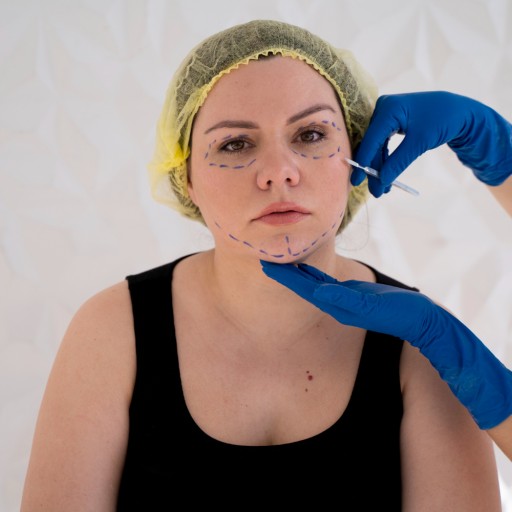Buccal Fat Extraction
3 results foundBuccal Fat Extraction: A Comprehensive Guide
Buccal fat extraction, also commonly referred to as buccal fat removal, is a cosmetic surgery intended to thin the cheeks and give the face a more defined look. This minimally invasive surgery works on the buccal fat pads that lie on the bottom of the cheeks, cutting down on fullness and revealing an overall look of facial structure. For those seeking a leaner and more distinguished face, buccal fat removal may be the answer. However, before opting for this surgical procedure, one must understand what it entails, the possible risks, and its advantages.
What is Buccal Fat Extraction?
Buccal fat extraction is a surgical procedure of removing extra fat from the buccal fat pads in the cheeks. These fat pads are naturally found on either side of the face and contribute to the fullness of the lower cheeks. In some people, excess buccal fat can make the face appear rounder or chubbier, leading to dissatisfaction with their appearance. Buccal fat removal involves removing part or all of the buccal fat pads to make the face more angular and thinner, hence a more contoured and youthful facial profile.
How is Buccal Fat Extraction Done?
The surgical extraction of buccal fat is usually done under local anesthesia, although it could also be performed with sedation, depending on the patient's preference and also on the complexity of the surgery itself. The surgeon makes small cuts inside the mouth, usually toward the rear of the cheek where buccal fat pads are located. Through these cuts, he meticulously removes the extra fat before sealing the cuts with dissolvable sutures. This procedure generally takes about 30 minutes to one hour and is usually performed on an outpatient basis.
Who is a Good Candidate for Buccal Fat Extraction?
Ideal candidates for buccal fat extraction are relatively healthy patients with realistic expectations and desiring an facial appearance with more definition. Patients must have significant fullness in the lower portions of their cheeks that would have otherwise not dissipated through weight loss or aging. These individuals usually have a naturally round face or might feel that their cheeks are disproportionate to their entire face and want this area slimmed. However, candidates should also have a well-defined bone structure, as removing too much fat from the cheeks in individuals without a strong jawline or cheekbones may result in an unnatural look.
Benefits of Buccal Fat Extraction
Buccal fat removal offers several aesthetic benefits that can enhance a person's facial appearance:
Slimmer, More Defined Cheeks: Buccal fat extraction offers the greatest impact by way of reducing the fullness of the cheeks, resulting in a better face contour and more angularity.
Improvement in Facial Proportions: Aesthesia removes surplus fat to balance facial proportions, making the face look more harmonious.
Long-Lasting Results: The buccal fat pads do not regenerate once removed, thus the surgical results are permanent.
Minimal Scarring: Because the incisions are made inside the mouth, there is no visible scarring on the face, making the procedure minimally invasive with discreet results.
Risks and Considerations
Even though the Buccal Fat Extraction is a generally safe procedure, it does have associated risks and complications:
Infection: As with any surgery, this is a potential risk of infection; it's most vulnerable because the incisions are made inside the mouth.
Loss of Facial Expression: Too much fat removal can result in an unnatural facial expression that looks hollow, which in turn may affect facial expressions and aesthetics.
Asymmetry: If fat is not removed from both sides symmetrically, it may lead to facial asymmetry. Corrective procedures will henceforth be needed.
Swelling and Bruising: Most patients will experience swelling and bruising following surgery, although it can resolve in a few weeks.
Nerve Damage: This is rare, but there's a possibility of nerve damage-which might affect facial movement or sensation, particularly around the mouth.
Recovery and Aftercare
The recovery period for buccal fat removal is relatively short, as most patients are able to return to normal activities within days. However, there are one or two important aspects of aftercare to take into consideration in ensuring a smooth recovery:
Swelling and Discomfort: A moderate amount of swelling and discomfort is normal for the first few days following surgery. If it is more significant, it can be improved with the help of ice packs and pain medications that your doctor may prescribe.
Oral Hygiene: As incisions have been given inside the mouth, oral hygiene plays an important role in the after-surgery stages. Infection can be avoided by rinsing with antiseptic mouthwash and avoiding certain foods during recovery.
Dietary Restrictions: Food intake might be restricted to a soft-food diet for the first few days following surgery to avoid aggravating the incisions.
Avoiding Strenuous Activities: A patient must avoid heavy exercise or those activities that can result in increased swelling or stress on the healing area for at least a few weeks.
Results and What to Expect
The results of buccal fat extraction become apparent as the swelling goes down with time. Within a few weeks, patients will begin to notice a more defined, sculpted facial appearance. The full effects of the procedure can be seen after about 1-3 months, as the face continues to adjust and heal. It’s important to note that the removal of buccal fat is permanent, so the results will last for years to come. However, the aging process will eventually take its course in the face, and some changes may take their natural course with time.
Is Buccal Fat Extraction Right for You?
Deciding on whether buccal fat extraction is right for you involves careful consideration. It is rather important not to build unrealistic expectations about the outcome, understanding that the procedure will not be suitable for everybody. A consultation with a board-certified, highly experienced plastic surgeon would be necessary to determine whether you are a suitable candidate for the procedure. Your surgeon will evaluate your facial anatomy, discuss your objectives with you, and go through the list of probable risks and benefits to give you an opportunity to make a rightfully informed decision.
Conclusion
Buccal fat extraction is one of the most popular cosmetic procedures that offer effective slimming and contouring of the cheeks, offering a more youthful, sculpted facial appearance. While relatively straightforward, the surgery produces long-lasting results, so careful consideration of benefits, risks, and post-surgery recovery needs to be taken into consideration before embarking on the surgery. If you're considering buccal fat extraction, make sure you consult with a skilled surgeon to achieve the best results and enjoy the confidence that comes with a more defined, beautiful face.



